Whether comprised of silicates, icy dust, water ice or rock and whether micrometre, multi-metre or millions of kilometres in size, all the rings in our Solar System are detritus, relics of our star’s protoplanetary disc.
Rings litter a Solar System where ‘roundness’ rules.
The spinning Sun, planets and moons are all near-spherical. Why are planets round?
Were rings instrumental in the evolution of our Solar System? Are rings relevant or mere rejects?
Do discs denote rise or demise, or neither?

The Oort Cloud
One very familiar ring was spawned some 4.6 billion years ago from a fragmenting cool molecular cloud.
Over the next 100,000 years gravity, gas pressure, magnetic fields and rotation flattened this spinning nebula into our nascent Solar System’s protoplanetary disc.
Peppered with pre-planetary material and anchored by its young T Tauri protostar, the disc stretched out to 200 Astronomical Units (AU) in diameter (where 1AU is the average distance between Earth and the Sun).
Another 50 million years saw rising temperatures fuse hydrogen in the star’s core, allowing energy to counteract gravitational contraction and ultimately spawn our Sun.
The legacy? A spherical reservoir of trillions of leftover, loosely bound comets known as the Öpik-Oort Cloud, stretching 50,000AU to 200,000AU from our main sequence star.
For more info on calculating these gargantuan numbers, read our guide on how astronomers measure distance in space.
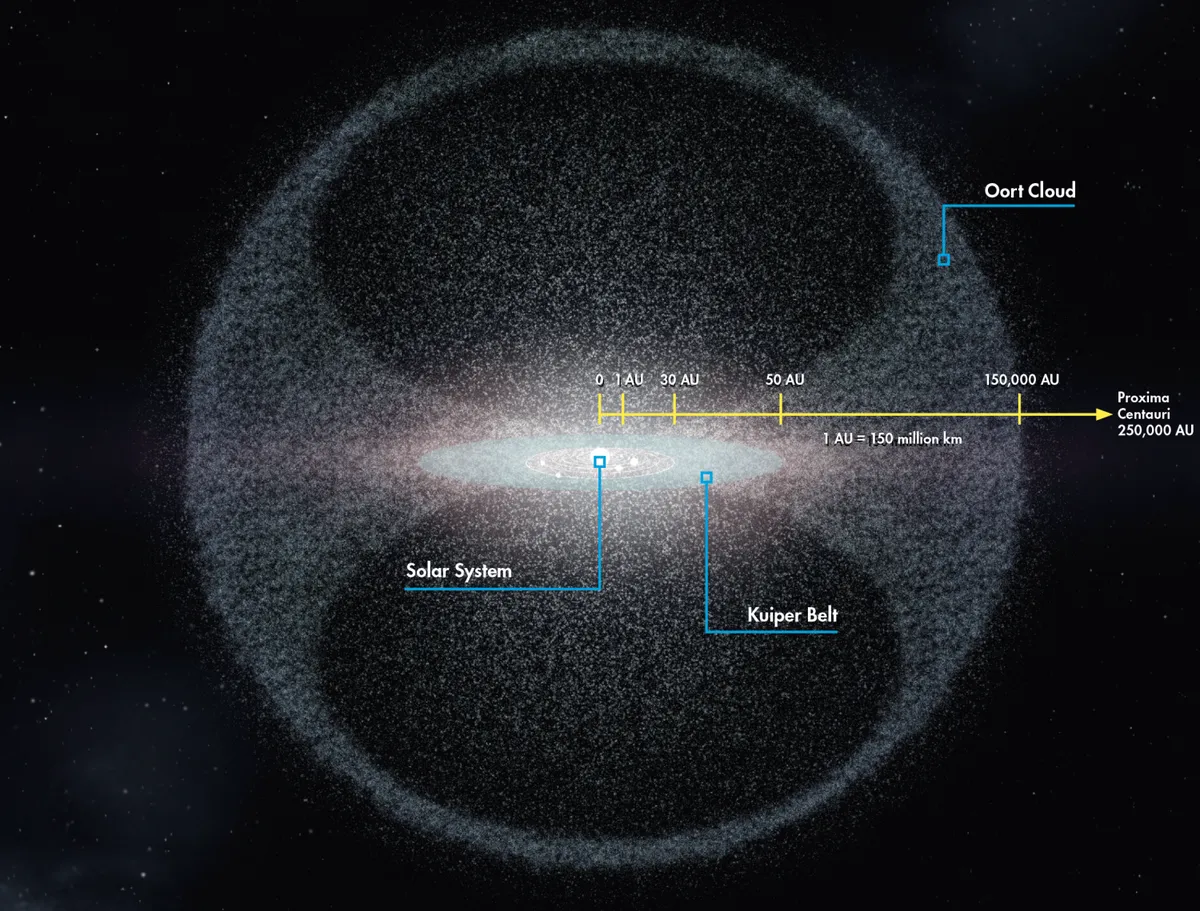
Hills Cloud
Like a Russian Matryoshka doll, within this trundles another hypothesised ring, the doughnut-shaped Hills Cloud.
Spanning as far as perhaps 30,000AU from the Sun, this swarming disc of icy debris could contain 20 trillion comets – the largest concentration in our neighbourhood.
And, along with the outer cloud, host the so-called long-period comets, which have orbits greater than 200 years.
Inside this ring, closer to our Sun, lies another: the diaphanous Scattered Disc, home of the short-period comets, which have orbits shorter than 200 years.
Once too distant and circling too slowly to be accreted into larger bodies, these icy Scattered Disc Objects are survivors of the solar nebula: a remnant of the molecular cloud from which our Solar System formed.

Later strewn by a gravitational interplay between the gas giant planets – primarily Jupiter, Saturn and a migratory Neptune – these sentinels still exist in a smaller 50-150AU ring defining the Solar System’s frozen outer realms.
Zooming in to some 50AU from our Sun, the inner Scattered Disc meets another ring, the outer Edgeworth-Kuiper Belt extending inwards to Neptune.
Here dwell three of the five dwarf planets: Pluto, Haumea and Makemake, each rolling alongside other smaller orbiting bodies.
We meet another narrow dense and newly discovered ring, this time around rugby ball-shaped Haumea.
A possible result of a collision between its moons Hi’iaka and Namaka, this ring was discovered occulting distant star URAT1533-1825 in January 2017, double-dimming its light by an astonishing 50%.
Solar System planets
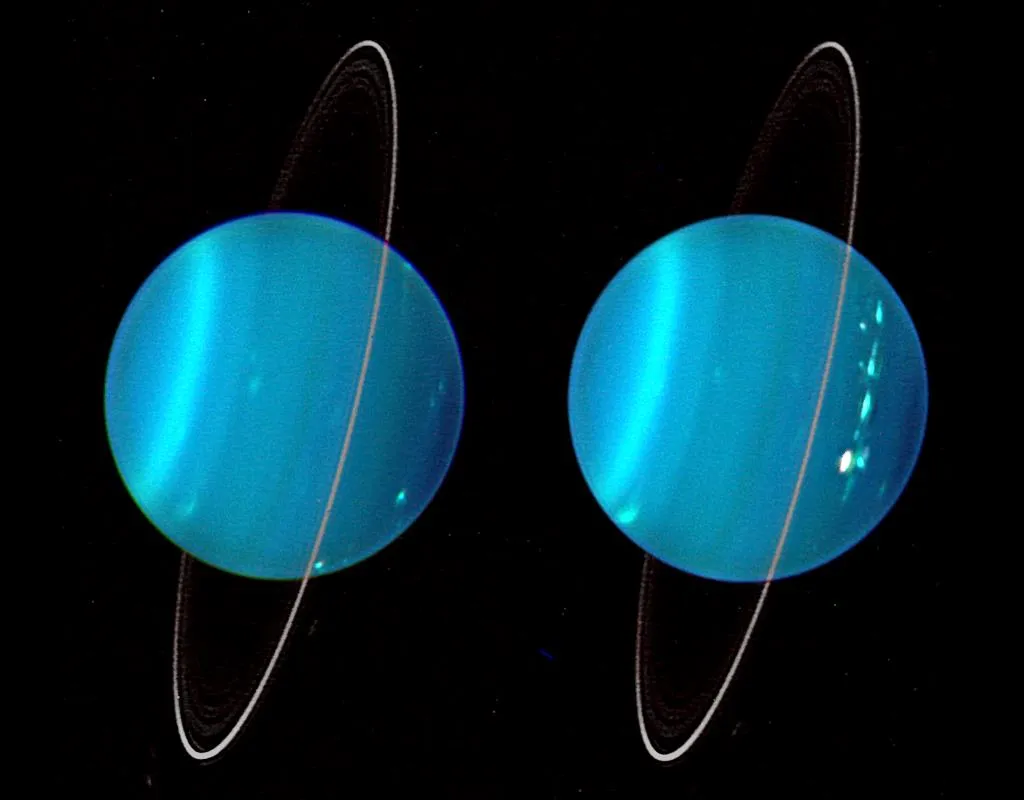
Source: W. M. Keck Observatory (Marcos van Dam) - Lawrence Sromovsky, University of Wisconsin-Madison/W.W. Keck Observatory
Spiralling yet further inward from these Trans-Neptunian Objects – those minor planets populating the Kuiper Belt, Scattered Disc and Oort Cloud – we spy Neptune, Uranus, Saturn and Jupiter.
Recognise a theme? Yet more rings. Neptune has six, each tenuous and dusty. Uranus, with its arcs and interspersed dust bands, has 13.
The most extensive ring system, of course, are Saturn's rings.
Sculpted by gravity, resonances between embedded ‘shepherd’ moons and other phenomena, these rings are exquisite.
The water ice Saturn's rings are made up of have been pushed, pulled and pummelled into spiral density waves, cliffs, accreting moonlets, gaps, spokes and other dazzling derivations.
Yet these are but trivial compared to the Phoebe dust ring. This Saturnian circle spreads a whopping 6 to 12.5 million km and is sparsely peppered with dark particles measuring just one-tenth to one-fifth the average width of a human hair.
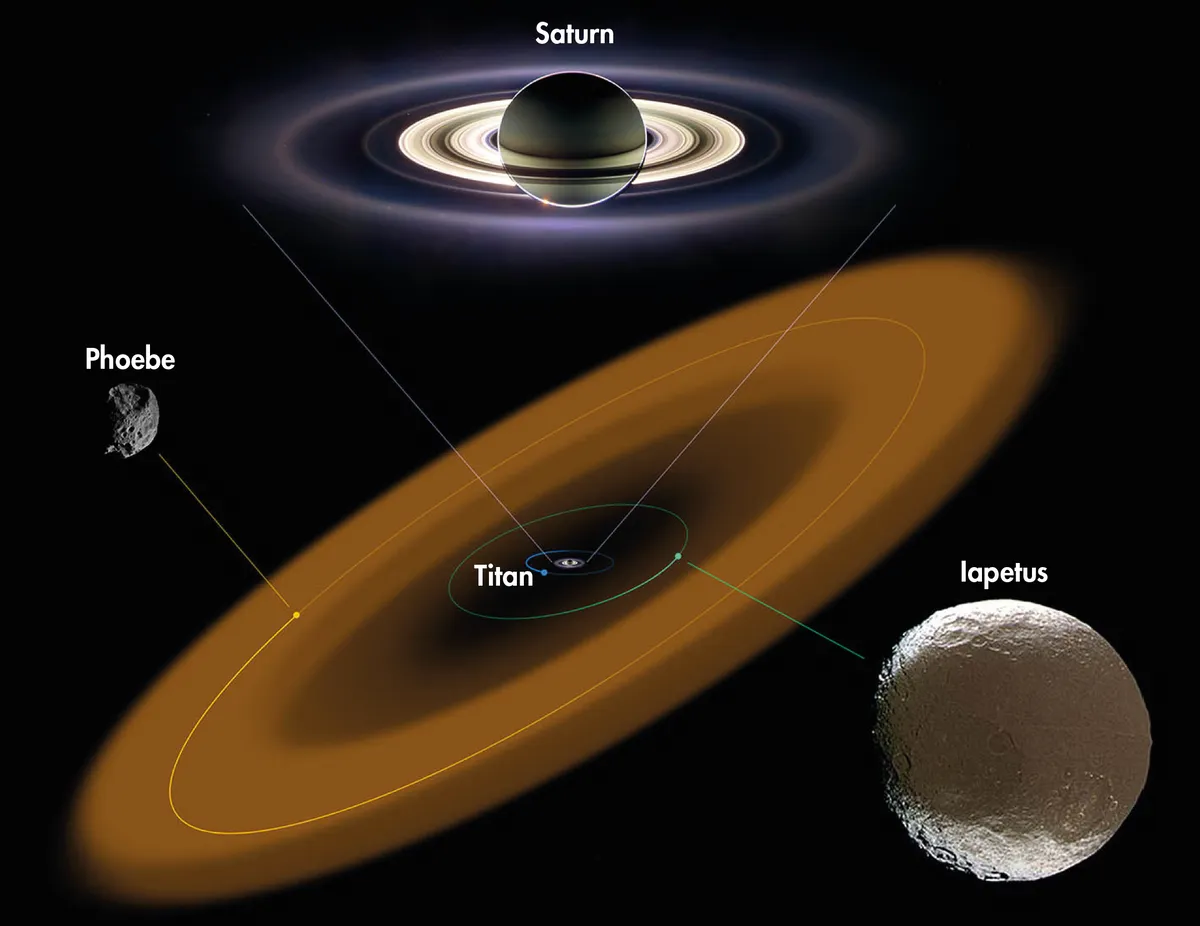
As we dive ever deeper into our Sun’s gravitational well we discover the lesser-known Jovian rings: a system of 100 to 1,000-year-old self-replenishing dust.
Looming 10,000km above Jupiter’s ring plane spins the thick inner torus or ‘halo’, girdled by an outer razor-thin ring some 30km deep.
A third ring’s inner edge furnishes a faint 600km-thick cloud, or bloom, fed by dust from moons Metis and Adrastea, and other impacting bodies.
Concentricity continues. The main ring smears into two wider ‘gossamer rings’, Amalthea and Thebe, so-named after the Jovian moons from whose material they are composed.
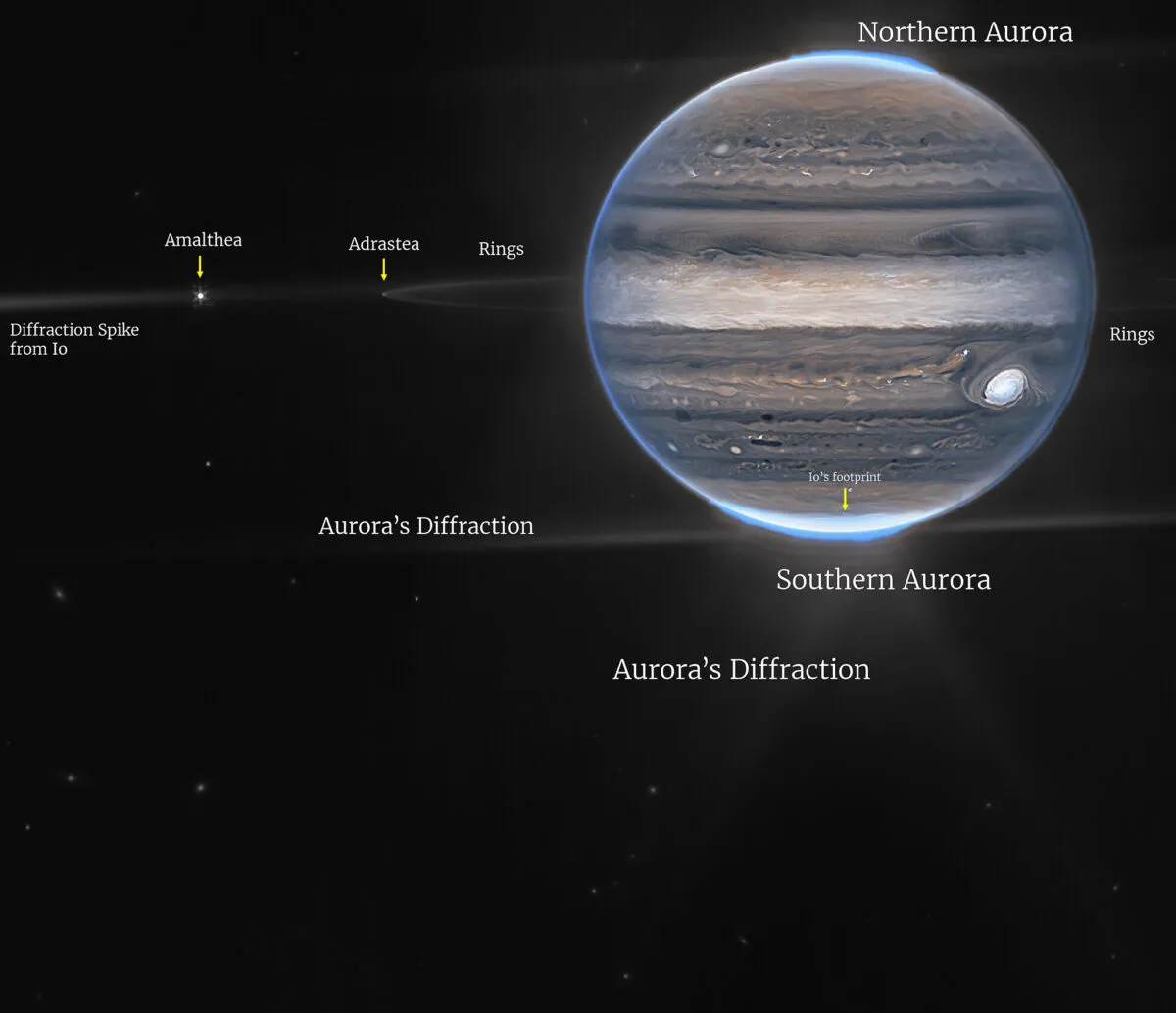
Beyond is the whiff of a primordial arc of dust detected by NASA’s New Horizons probe, hinting at the dawn of yet another ring.
And cradling them all is a bagel-shaped torus of ionised sulphur, oxygen, sodium and chlorine.
This dynamic hoop centres on Jupiter’s volcanic satellite Io.
Io is tilted with respect to Jupiter’s equator and its own orbital plane, and as it completes its 1.8-day orbit, swooping above and below the hoop’s core, neutral atoms and molecules are stripped from its tenuous atmosphere and companion neutral doughnut-shaped cloud.
Energised and accelerated by the gas giant’s mighty magnetosphere and speedy 10-hour rotation, this miasmic ring of plasma co-rotates at some 74 km/s.

So, just the four gas giant ring-systems then, plus those of tiny Haumea? No! Rings reside almost everywhere in our Solar System’s rubble-ridden realms.
Before Haumea’s were discovered astronomers found rings around the 250km-wide asteroid 10199 Chariklo and the 200km-wide minor planet 2060 Chiron.
These double-ringed rocky relics orbit between Jupiter and Neptune, their discs diminutive but still beautifully formed.
Why rings form in the Solar System
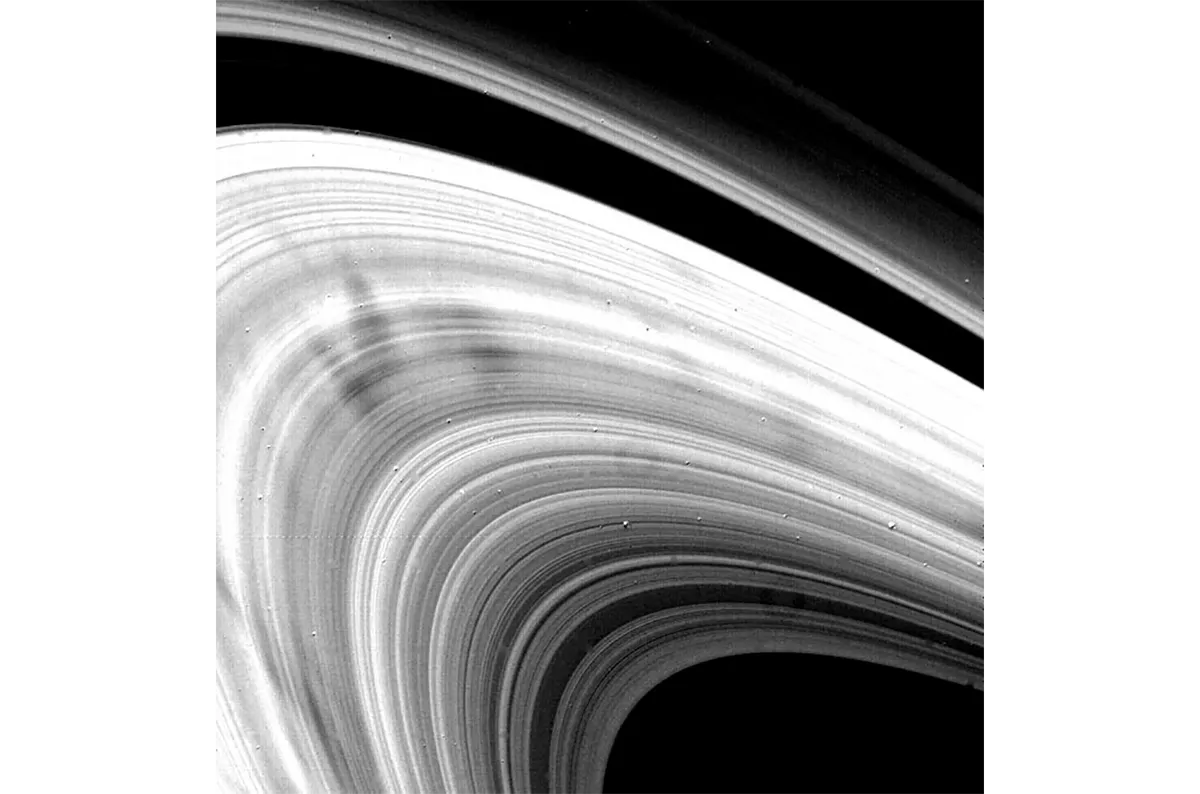
So why are there rings in the Solar System, and why so many? The simple answer is gravity and its governance.
This, and competing forces, shaped our nascent Sun and protoplanetary disc. It still does.
Any objects orbiting within a planet’s gravitational threshold – known as the Roche Limit – endure tidal forces overwhelming their own gravity, which prevents coalescence into a moon.
If an orbiting moon breaches that limit, tidal stresses tear it apart. A cosmic impact will rip a moon asunder.
There are meteoroid strikes. Cryovolcanic activity creating ejecta. The fallout? Gravitationally corralled rings.
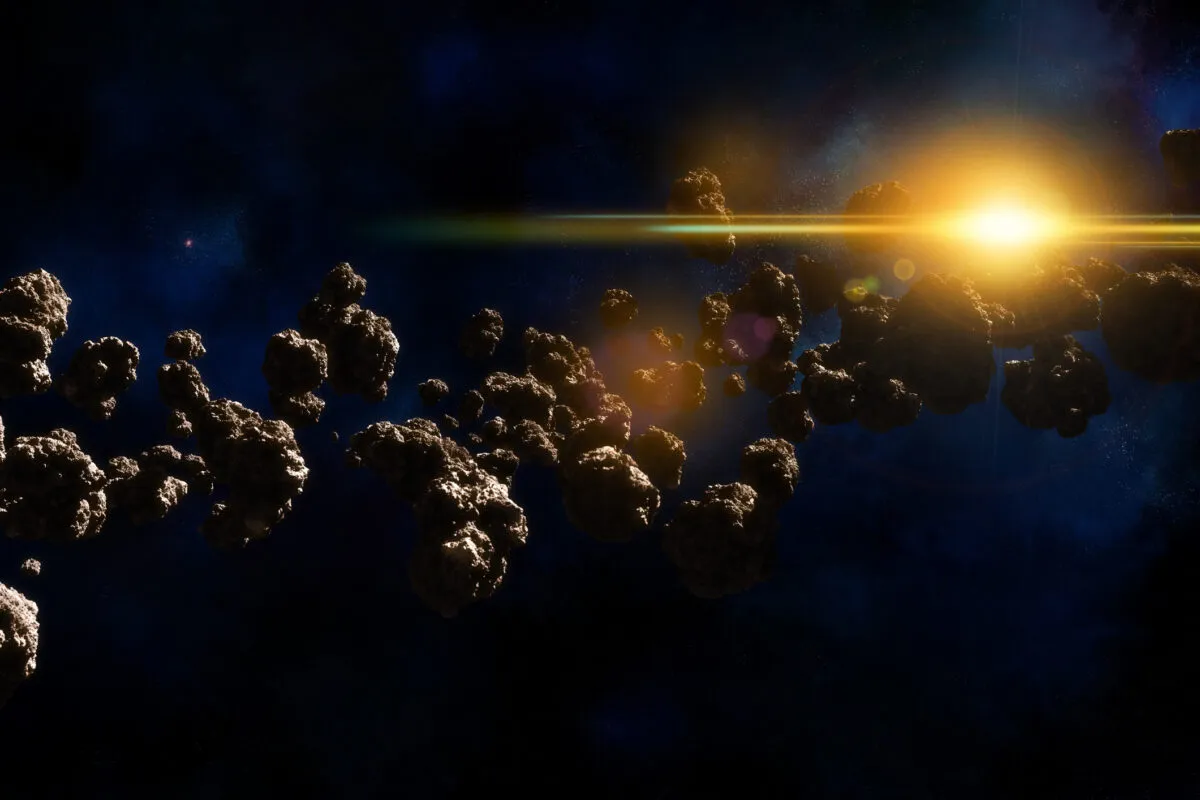
This ring-fest overview halts some 2AU from the Sun, in the raggedy bracelet of the main asteroid belt circling between Jupiter and Mars.
Meet billions more pebbles, larger asteroids – Vesta, Pallas and Hygiea – and the 950km-wide dwarf planet Ceres.
If the Martian moon Phobos smashes into the Red Planet, there will be rubble.
Constrained by gravity, it may eternally circle or coalesce into another spherical moon, to be again impacted.
Rings represent beginnings, middles and ends, their evolution evident not just around our host star, but others in the Milky Way Galaxy and beyond.
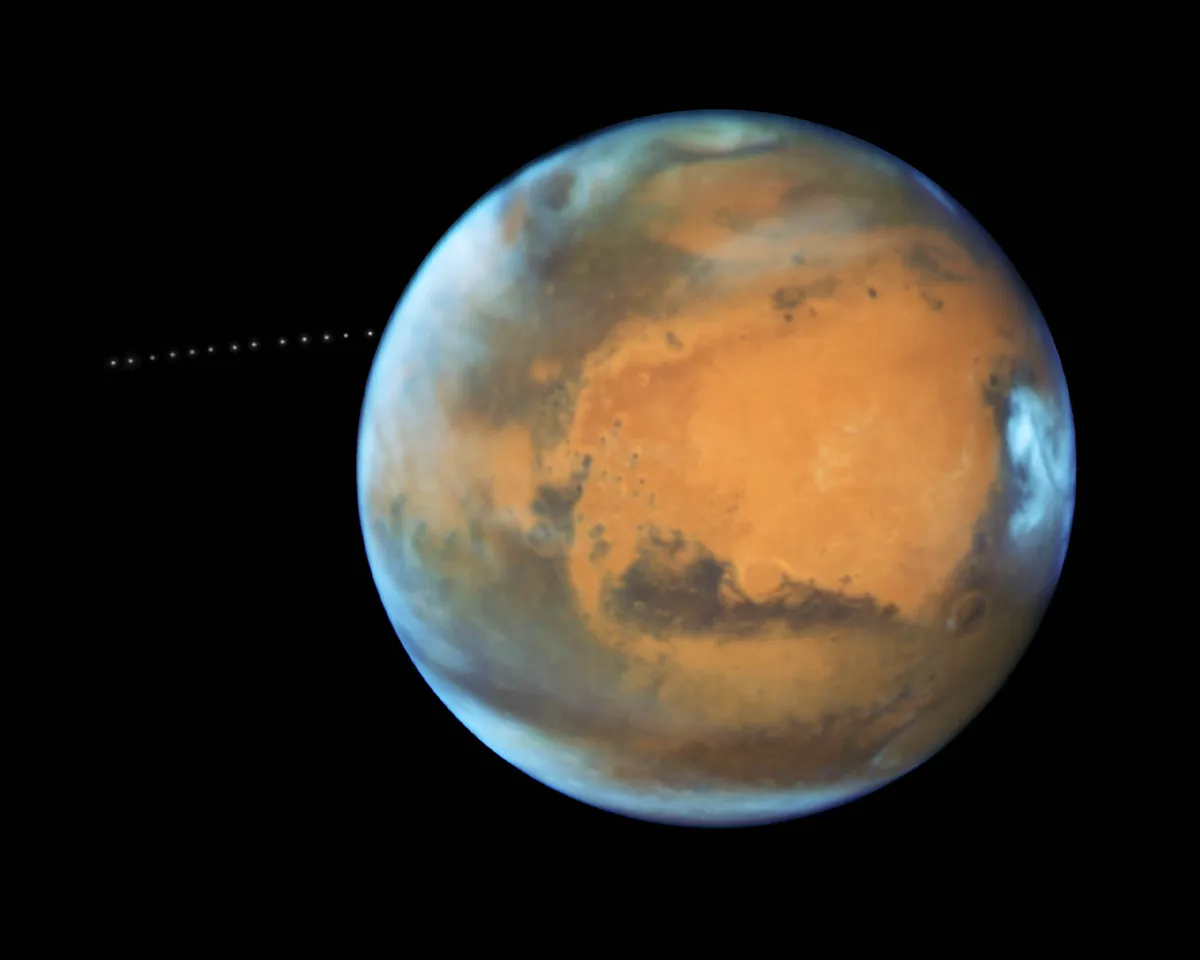
Solar System rings facts and figures
Öpik-Oort Cloud
- Radius: 200,000AU
- Discovered by Ernst Öpik, Jan Hendrik Oort (theorised)
Hills Cloud
- Radius: 30,000AU
- Discovered by JG Hills
Scattered Disc
- Radius: 100AU
- Discovered by David C Jewitt, Jane Luu (fist object)
Edgeworth-Kuiper Belt
- Radius: 55AU
- Discovered by David C Jewitt, Jane Luu
Main asteroid belt
- Radius: 3.2AU
- Discovered by Giuseppe Piazzi (who discovered Ceres, the first observed object within the belt)
Rings of Saturn
- Radius: 480,000km (outermost)
- Discovered by Christiaan Huygens
Phoebe dust ring
- Radius: 12,500,000km
- Discovered by Anne J Verbiscer, Michael F Skrutskie, Douglas P Hamilton
Rings of Jupiter
- Radius: 226,000km (outermost)
- Discovered by Voyager 1
Rings of Neptune
- Radius: 62,900km (outermost)
- Discovered by Voyager 2
Rings of Uranus
- Radius: 51,150km (outermost)
- Discovered by James L Elliot, Edward W Dunham, Jessica Mink
Rings of Haumea
- Radius: 2,287km
- Discovered by 10 central European observatories
Rings of 10199 Chariklo
- Radius: 410km (outermost)
- Discovered by 10 telescopes in Argentina, Brazil and Chile
Rings of 95P/Chiron
- Radius: 320km (outermost)
- Discovered by Amanda Bosh, Jessica Ruprecht, Michael Person, Amanda Gulbis
This article originally appeared in the October 2018 issue of BBC Sky at Night Magazine.

